DAF Werkschar Lower Leaders Field Cap
CATEGORY: Version
SKU: 81.GOR.01.01.02.007.000
Estimated market value:
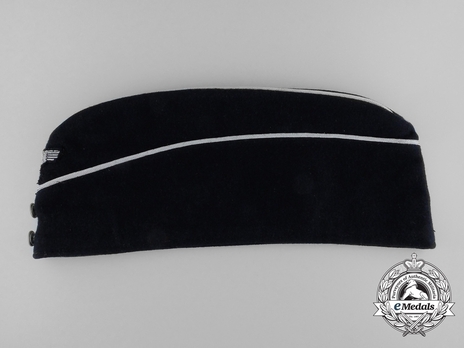
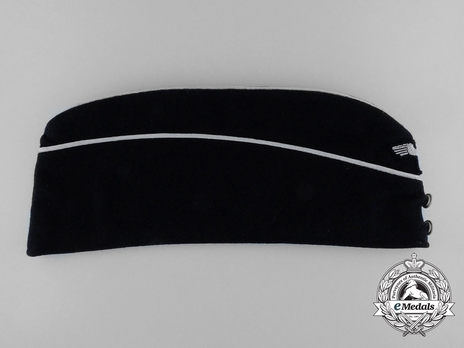
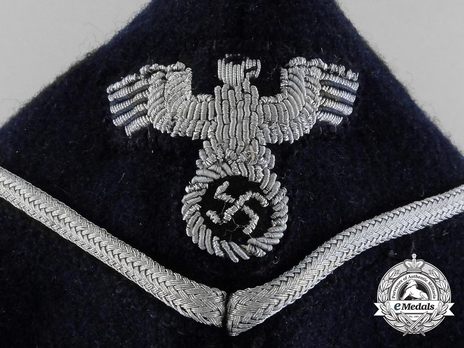
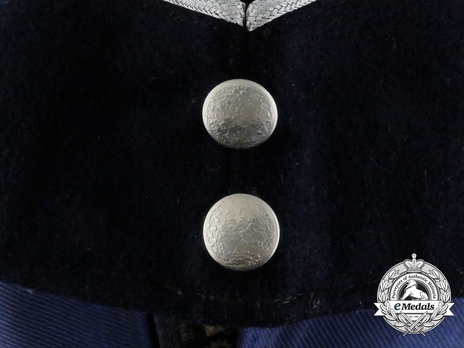
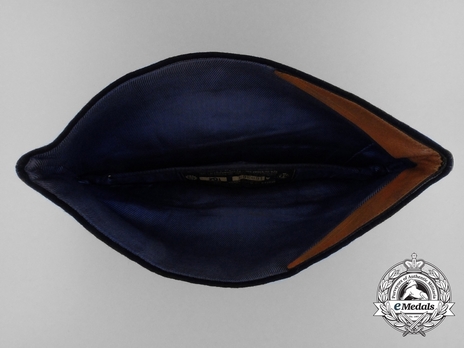
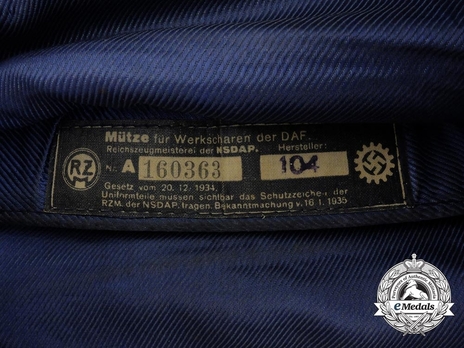
Estimated market value:
Constructed with a black wool exterior, with two rising peaks forming a valley between the two, the edges of the peaks and the sides of the cap trimmed in silver-coloured bullion piping in a thatched pattern, the side piping gently sloping downward towards the front, eagle insignia in rolled silvered bullion wire in various textures on a black wool base, sewn in place on the peak at the front, illustrating a right-facing spread-winged eagle, its talons gripping a wreathed swastika, with two silvered magnetic pebbled metal buttons below. The interior with an intentionally-designed partial sweatband at the front and emboss stamped, the stamp clearly inscribed "DEUTSCHE" on the top line, lined in blue rayon, a manufacturer's label stitched in place on the left side of the peak in the dome, the label printed in black ink with a large RZM insignia at the left and a large DAF insignia at the right, marked "Mütze für Werkscharen der DAF" (Cap for DAF Work Groups) and "Reichszeugmeisterei der NSDAP.", numbered "Nr. A 160363", marked "Hersteller" (Manufacturer) and coded "104", above "Gesetz vom 20. 12. 34 / Uniformteile müssen sichtbar das Schutzzeichen der RZM der NSDAP. Iragen Bekanntmachung v. 16. 1. 1935", with the size stamped "59" in white ink on the right side of the peak in the dome. The cap measures 120 mm x 300 mm, exhibiting light soiling on the interior lining near the opening, very clean, with intact stitching and is free of interruptions in the fabric, near extremely fine.
The DAF (Deutsche Arbeitsfront = German Labour Front) was the result of a forced association of all German trade unions, established on May 10, 1933. Its purpose was the coordination and control of all aspects of German labour to serve the interests of the NSDAP. The DAF leader was Reichsleiter Robert Ley.
The Werkscharen (Factory Brigades) of the DAF were the “soldiers” of the organisation, formed in 1934. They were trained and organised as paramilitary, uniformed units, yet remained unarmed. Beginning in April 1937, active Werkschar units (Stoßtrupps) would wear silver-coloured insignia, while administrators wore gold-coloured insignia. Even though Werkscharen were not affiliated with the Reichsluftschutzbund (RLB, National Air Raid Protection League), during the war they often functioned as factory air raid protection auxiliaries.
Some companies, especially major corporations, used additional security personnel, which were dubbed Werkschutz (Factory Protection), and later Werksicherheitsdienst (Factory Security Service).
The first version of the Werkschar Field Cap was introduced in February of 1936, in the “Lagermütze” (camp cap) style. It is plain without piping and features the DAF cogwheel emblem on the front above the flap, with two white or silver-coloured buttons on the flap below it. The flap is non-functional and was sewn to the cap body.
The second version was introduced in April 1937. This version is in the “Schiffchen” (overseas cap) style. It also has two buttons at the front, but instead of the cogwheel insignia it features a “political” style national eagle emblem like the one worn on NSDAP caps. This eagle insignia was generally embroidered, but wear of metal eagles has been observed on occasion as well. Gold-coloured eagles for the highest ranks were introduced in 1938.
The flap was still non-functional and sewn to the cap body.
There is piping on the upper edge of the flap and on both sides of the central fold. Initially the colour represented a regional level: Ort (location) or Betrieb (factory) was light blue, Kreis (district) was black, Gau (greater district) was red, and Reich (national level) was gold-coloured. This was changed in March of 1938. The region-specific piping colours were discontinued and replaced by either gold-coloured or silver-coloured piping, depending on rank. The button colour mirrored the piping colour.

Comments
Sign in to comment and reply.


Scroll Top